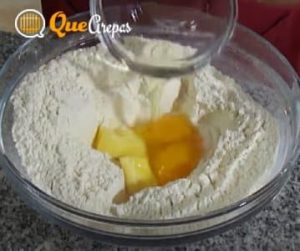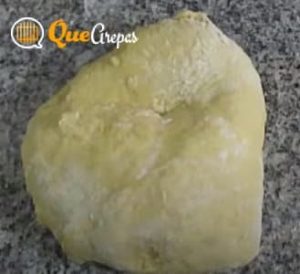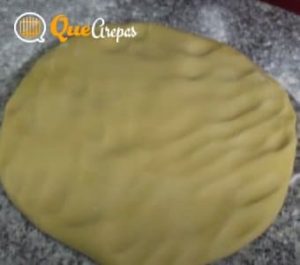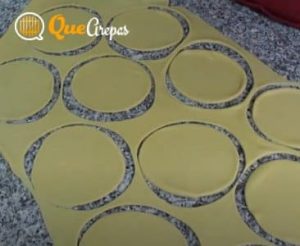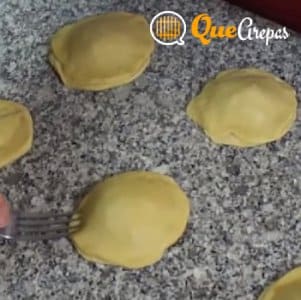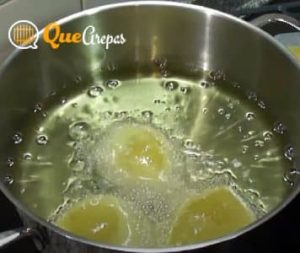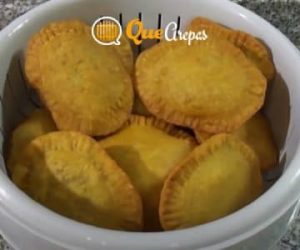Delicious Venezuelan Pastelitos: An Irresistible Morsel
Discover the irresistible delight of Venezuelan pastelitos. These tasty and crunchy bites will transport you to the rich gastronomic tradition of Venezuela. With their diverse fillings and perfectly browned dough, pastelitos are the perfect choice to satisfy your cravings. Immerse yourself in a unique culinary experience and let yourself be seduced by their authentic flavor!
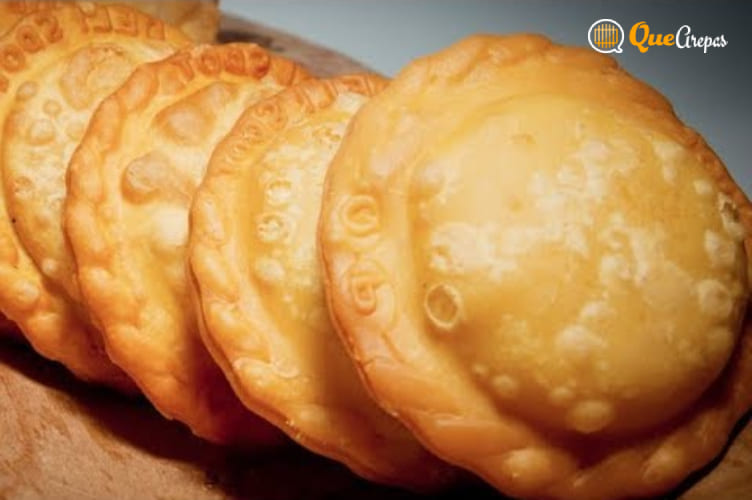
Tequeños, Bollos Pelones, Perritos Calientes, Pasticho, Pan de Jamón
Venezuelan pastelitos are appreciated for their popularity rooted in the country's culinary tradition. These delicious snacks demonstrate their versatility by being present in a variety of occasions, from breakfasts and snacks to special celebrations. Their crunchy dough and tasty fillings make them an irresistible option for lovers of Venezuelan gastronomy. Discover the magic of pastelitos and immerse yourself in their authentic flavor.
- Origin and history of Venezuelan Pastelitos
- Key ingredients for the Venezuelan Pastelitos
- The preparation process
- Frying and baking techniques
- Venezuelan Pastelitos Recipe - quearepas.com
- Accompaniments and presentation
- Varieties of Venezuelan pastelitos
- Venezuelan Pastelitos Adaptations
- Enjoying Venezuelan Pastelitos at all times
- Frequently Asked Questions
Origin and history of Venezuelan Pastelitos
Venezuelan pastelitos have a fascinating history that dates back centuries. These delicious treats find their roots in the cultural influences that have converged in Venezuela over time.
Cultural influences in the creation of Venezuelan Pastelitos
The creation of Venezuelan pastelitos was shaped by the fusion of cultures that characterizes the country. From local indigenous traditions to European and African influences, each culture contributed its special touch to these tasty treats. This cultural diversity is reflected in the variety of fillings, spices and techniques used in the preparation of the pastries.
Evolution of ingredients and techniques over time
Over the years, the ingredients and techniques used in the preparation of Venezuelan pastelitos have evolved. New ingredients have been incorporated, recipes have been perfected and culinary techniques have been adapted to enhance their flavor and texture. This continuous evolution is testimony to the love and passion of Venezuelans for their gastronomy, ensuring that pastelitos remain a culinary jewel in constant transformation.
We recommend you to see the recipe of Cachitos de Jamón Venezolanos
Key ingredients for the Venezuelan Pastelitos
Venezuelan pastelitos stand out for their carefully selected ingredients, which provide the unique and delicious flavor that characterizes them.
Dough for pastelitos: Elaboration and secrets
The dough for Venezuelan pastelitos is the basis for its crunchy and light texture. It is made with wheat flour, water, salt and other key ingredients. The secrets to achieving a perfect dough include proper kneading, resting to develop flavors and the right temperature when frying or baking.
Traditional Fillings: Meat, chicken, cheese and more
Traditional Venezuelan pastelitos fillings are as varied as they are delicious. Seasoned beef, shredded chicken, white cheese and other ingredients are favorites for filling these bites. Each brings its own flavor and texture, creating an irresistible taste experience.
Optional ingredients and creative variations
In addition to traditional fillings, Venezuelan pastelitos offer room for culinary creativity. Ingredients such as pork, seafood, vegetables and even bolder flavor combinations can be used to create unique variations. These additional options allow the pastelitos to be customized to each person's tastes and preferences, providing an even more exciting culinary experience.
Accompany the cupcakes with a delicious drink of Papelón con Limón
The preparation process
Preparing Venezuelan pastelitos requires following a careful process to guarantee their characteristic flavor and texture. Here are the key steps to achieve delicious pastries.
Dough preparation: From kneading to perfect consistency
The pastelitos dough is made by kneading wheat flour, water, salt and other ingredients. It is important to knead until the dough is elastic and smooth, allowing it to rest to develop its flavors. Then, it is divided into portions and stretched with a rolling pin until thin and uniform discs are obtained.
The filling: Cooking and seasoning for authentic flavor
The filling is an essential part of Venezuelan pastelitos. To achieve an authentic flavor, selected ingredients, such as meat, chicken or cheese, are cooked and seasoned until a juicy and flavorful mixture is obtained. It is important to make sure that the filling is well seasoned to enhance its flavor to the maximum.
Assembling and closing the pastries: Techniques and practical tips.
Once the dough and filling are ready, place a portion of the filling in the center of each disk of dough. Then, fold the dough into a semicircle and seal the edge by pressing with your fingers or using a fork. It is important to make sure that the pastries are tightly closed to prevent them from opening during baking.
And after enjoying the cupcakes, don't forget to try the Quesillo Venezolano
Frying and baking techniques
Frying and baking techniques are two popular options for cooking Venezuelan pastelitos. Each has its advantages and distinct characteristics. Below, we will explore the techniques and their results.
Frying: Tips for perfect browning
Frying is a classic technique for cooking Venezuelan pastelitos. To obtain a perfect browning and a crispy texture, it is recommended to heat enough oil in a deep frying pan at a suitable temperature. It is important to dip the pastelitos in the hot oil, making sure they are completely covered, and turn them over so that they cook evenly. When finished, remove them and place them on absorbent paper to remove excess fat.
Baking: A healthier and more delicious option
Baking is a healthier alternative for cooking Venezuelan pastelitos. For best results, preheat the oven to a suitable temperature and place the pastries on a baking sheet previously greased or lined with baking paper. Bake until golden brown in color and crisp in texture. Baking is an option that requires less oil and offers a lighter version of the pastries, preserving their characteristic flavor and aroma.
Comparison of results between frying and baking
The choice between frying and baking will depend on personal preference and dietary needs. Frying provides a crispier texture and a slightly different flavor due to the contact with the hot oil. On the other hand, baking produces lighter and less fatty pastries, while maintaining their authentic flavor. Both techniques are valid and offer delicious results, so you can experiment with both to discover your personal preference.
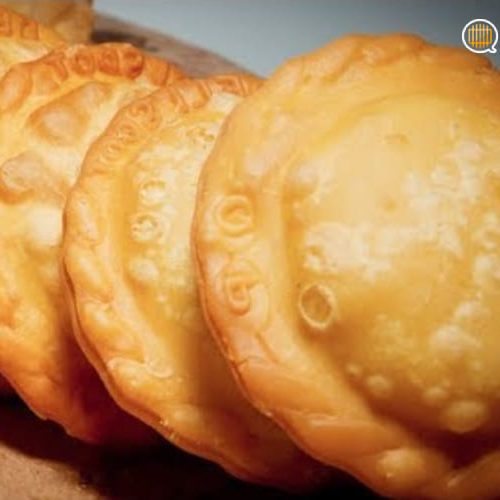
Venezuelan Pastelitos Recipe - quearepas.com
Ingredients
- 2 cups All-purpose wheat flour
- 1/2 tbsp Salt
- 2 tbsp Butter or margarine, at room temperature
- 1/2 cup Warm water
- 2 cups Vegetable oil for frying
- 1 unit Egg
Instructions
- In a large bowl, mix the wheat flour and salt. Add the butter or margarine and mix with your hands until you get a sandy texture.
- Gradually add the warm water, little by little, while mixing with your hands. Continue kneading until you obtain a smooth, elastic dough. If the dough is too dry, add a little more water, one tablespoon at a time. If it is too sticky, add a little more flour.
- Transfer the dough to a lightly floured surface and knead for about 5-7 minutes, until the dough is smooth and elastic.
- Form the dough into a ball, place it in a bowl and cover it with a damp cloth. Let rest for at least 30 minutes to relax the dough and make it easier to handle.
- After the resting time, divide the dough into smaller portions, about the size of a golf ball. This will make it easier to roll out the dough and fill the pastelitos.
- Take a portion of dough and, using a rolling pin, roll it out on a lightly floured surface into a thin circle approximately 10-12 cm in diameter.
- Place a spoonful of filling in the center of the dough circle. Fold the dough in half, forming a semicircle, and press the edges with your fingers to seal them. You can use a fork to score the edges to make sure they are well sealed.
- Repeat this process with the rest of the dough and filling.
- Heat enough vegetable oil in a skillet over medium-high heat. Make sure the oil is hot enough before frying the pastelitos .
- Fry the pastelitos in batches, taking care not to overcrowd the pan. Cook the pastelitos for about 3-4 minutes on each side, or until golden brown and crisp.
- Remove the pastelitos from the pan and place them on paper towels to remove excess oil.
Video
Notes
Nutritional Information
The nutritional information for Venezuelan pastelitos may vary depending on the ingredients used and the size of each portion. The following is a general estimate of the nutritional values for each medium-sized (approximately 50 grams) fried pastelito:- Calories: about 180-200 calories.
- Fats: about 10-15 grams, depending on the type of filling and oil used for frying.
- Carbohydrates: about 20-25 grams, mainly from wheat flour.
- Protein: about 3-5 grams, depending on the type of stuffing used.
- Fiber: generally low in fiber content, with approximately 1-2 grams per muffin.
- Vitamins and minerals: the amount of vitamins and minerals may vary depending on the ingredients used in the filling, such as vegetables, meat or cheese.
Accompaniments and presentation
Venezuelan pastelitos are even more enjoyable when complemented with delicious accompaniments and presented in an attractive way. Here are some ideas to enhance your culinary experience.
Traditional sauces and dressings to serve with pastelitos
Traditional sauces and dressings are the perfect accompaniment to Venezuelan pastelitos. Garlic sauce, sweet chili sauce and guasacaca are classic options that enhance the flavor and add a touch of freshness. These sauces can be homemade or found in specialized stores. In addition, you can experiment with other spicy sauces, avocado spreads or even hummus to add variety and surprise your guests.
Fresh and crunchy salads as a side dish
Fresh, crunchy salads are the perfect complement to balance the flavor and texture of the pastelitos. A salad of lettuce, tomato, onion and avocado with a light lemon and olive oil dressing provides a refreshing combination. You can also add ingredients such as shredded carrots, cucumber or beets to add more color and texture. These salads bring extra freshness and nutrients to your meal.
Creative presentation to impress your guests
The presentation of Venezuelan pastelitos can elevate the dining experience. You can arrange the pastelitos on a large plate or in a wicker basket lined with paper towels. You can also add decorative elements, such as fresh parsley leaves or lemon slices, for a visually appealing touch. In addition, serving the accompaniments in small individual bowls next to the cupcakes will add an elegant and organized look to your presentation.
Varieties of Venezuelan pastelitos
- Pastelitos Andinos: These pastries originate from the Venezuelan Andes and are characterized by having a thicker and more consistent dough. They are usually filled with beef or pork seasoned with spices such as cumin, aji dulce and coriander. Andean pastelitos have a triangular shape and are fried until they are crispy on the outside and juicy on the inside.
- Pastelitos Orientales: Pastelitos Orientales are typical of the eastern region of Venezuela, especially Sucre state. Their dough is thinner and crispier than that of the Andean pastelitos. Traditional fillings include shredded salted fish, such as cazón, mixed with onion, ají dulce and spices. These pastelitos are usually fried until golden brown and crispy.
- Pastelitos de Pollo: Pastelitos de pollo are a popular variation found throughout Venezuela. They are filled with shredded chicken and seasoned with spices such as onion, garlic, paprika and cilantro. The chicken meat is pre-cooked and mixed with the seasonings before filling the dough. These pastelitos are fried until a golden and crispy texture is obtained.
- Pastelitos de Queso: Pastelitos de Queso are a delicious and creamy option. They are filled with Venezuelan white cheese, such as queso llanero or queso de mano. The cheese is cut into small pieces and placed in the center of the dough before sealing the edges. The pastelitos de queso are fried until golden brown and the cheese melts, creating a soft and flavorful filling.
- Pastelitos Dulces: Sweet pastries are a perfect variation for those who enjoy a touch of sweetness in their meals. They can be filled with different sweet ingredients such as sweet potato, guava, chocolate, dulce de leche or pastry cream. These sweet pastries can be sprinkled with powdered sugar or coated with frosting to highlight their sweet taste.
Venezuelan Pastelitos Adaptations
Venezuelan pastelitos are very versatile and lend themselves to adaptations and variations to suit different tastes and preferences. Here are some interesting options:
Vegetarian Pastelitos: Meatless options.
For those who prefer vegetarian options, Venezuelan pastelitos can be easily adapted. Instead of using meat, ingredients such as black beans, lentils, spinach, mushrooms or sautéed vegetables can be used as fillings. These vegetarian ingredients can be seasoned and spiced similarly to traditional versions, providing delicious and nutritious options for vegetarian food lovers.
Pastelitos dulces: A touch of flavor and sweetness
Venezuelan pastelitos can also be adapted to satisfy cravings for something sweet. Instead of using savory fillings, ingredients such as sweet potato, ripe plantain, guava, chocolate, hazelnut cream or dulce de leche can be used as fillings. These sweet pastries can be sprinkled with powdered sugar, cinnamon or even coated with a sugar glaze to enhance their sweet taste. They are a perfect option to enjoy as a dessert or to share on special occasions.
Gourmet pastelitos: Sophisticated versions for special occasions
If you are looking to take Venezuelan pastelitos to another level, you can experiment with gourmet versions. You can use more exclusive and sophisticated ingredients, such as lamb, fresh seafood, gourmet cheeses or seasonal vegetables. Plus, you can add additional ingredients such as aromatic herbs, exotic spices or gourmet sauces to enhance the flavors. These gourmet pastries can be presented in an elegant and refined way, making them the star dish for special occasions and sophisticated dinners.
Enjoying Venezuelan Pastelitos at all times
Venezuelan pastelitos are a versatile treat that can be enjoyed in different contexts. Here are some ideas to make the most of these tasty treats in different situations.
Events and celebrations where pastelitos are the star of the show
Venezuelan pastelitos are a popular choice for events and celebrations, as they are easy to eat and delicious. You can serve them as part of a buffet or as an appetizer at parties and gatherings. They are ideal for celebrations such as birthdays, Christmas, family reunions or even Venezuelan themed events. Pastelitos bring a traditional and tasty touch to any special occasion, and are sure to be a hit with your guests.
Reheat and preserve the pastelitos: Tips to keep them fresh
If you have leftover pastelitos or want to enjoy them at another time, it is important to know how to reheat them and preserve their freshness. To reheat them, you can use the oven preheated to medium heat or heat them in a nonstick pan over medium-low heat until they are hot. Avoid reheating them in the microwave, as they may become mushy. To preserve their freshness, store them in an airtight container in the refrigerator and consume them within 2-3 days. If you wish to freeze them, wrap them individually in aluminum foil or place them in freezer bags. When defrosting, it is preferable to reheat them in the oven to maintain their crunchy texture.
Flavor combinations: Recommended drinks and side dishes
To enjoy Venezuelan pastelitos to the fullest, you can combine them with drinks and accompaniments that enhance their flavor. For drinks, you can opt for natural soft drinks such as passion fruit juice, guava juice or coconut water. You can also accompany them with a delicious cup of Venezuelan coffee or hot chocolate. As for the accompaniments, traditional sauces and dressings such as guasacaca or garlic sauce are excellent options. Also, you can serve them with lemon slices or a fresh lettuce and tomato salad for a refreshing contrast.
Keep enjoying the delicious Venezuelan food and its exquisite recipes.
Frequently Asked Questions
What is the difference between Andean pastelitos and oriental pastelitos?
Andean pastelitos have a thicker and more consistent dough, while oriental pastelitos have a thinner and crispier dough. In addition, traditional fillings also vary, with Andean pastelitos generally filled with beef or pork, and oriental pastelitos filled with salted fish, such as dogfish.
Can I make the cake batter with corn flour instead of wheat flour?
Venezuelan pastelitos dough is traditionally made with wheat flour, but you can also make a version with precooked corn flour to obtain a different texture and flavor. However, the consistency and preparation process may vary, so it is advisable to follow a specific recipe for corn flour pastelitos dough.
What is the best way to fry pastelitos to obtain a crispy texture?
To obtain a crispy texture, it is important to make sure that the oil is hot before frying the cakes. It is recommended to heat the oil to a temperature of around 180-190°C. It is also important not to overfry the pan, as this can cause the cakes to absorb more oil and become soft instead of crispy.
Can I bake the cupcakes instead of frying them?
Yes, if you prefer a healthier option, you can bake the pastelitos instead of frying them. Preheat the oven to 200°C, place the cupcakes on a baking sheet and bake them for about 15-20 minutes, or until golden brown and crispy. Note that the result will be a slightly different texture than fried cupcakes.
Can the pastelitos be frozen before frying?
Yes, the cupcakes can be frozen before frying. Once you have formed the cupcakes, place them on a tray or plate separated from each other and put them in the freezer until they are firm. Then transfer them to a freezer-safe bag or container and store for up to 2-3 months. To fry, thaw in the refrigerator for a few hours and then follow the normal frying process.
If you want to know other articles similar to Delicious Venezuelan Pastelitos: An Irresistible Morsel you can visit the category Comida Venezolana.

